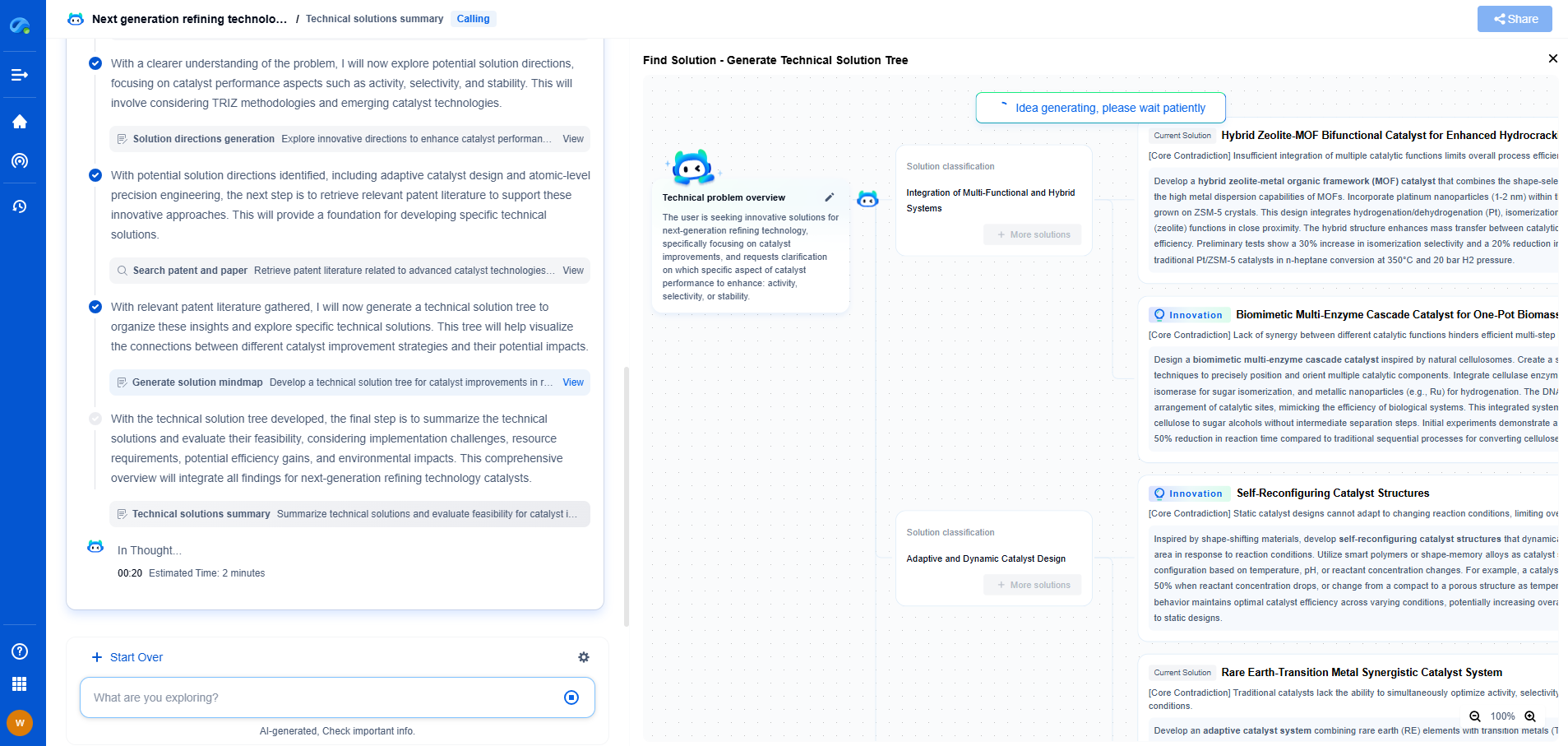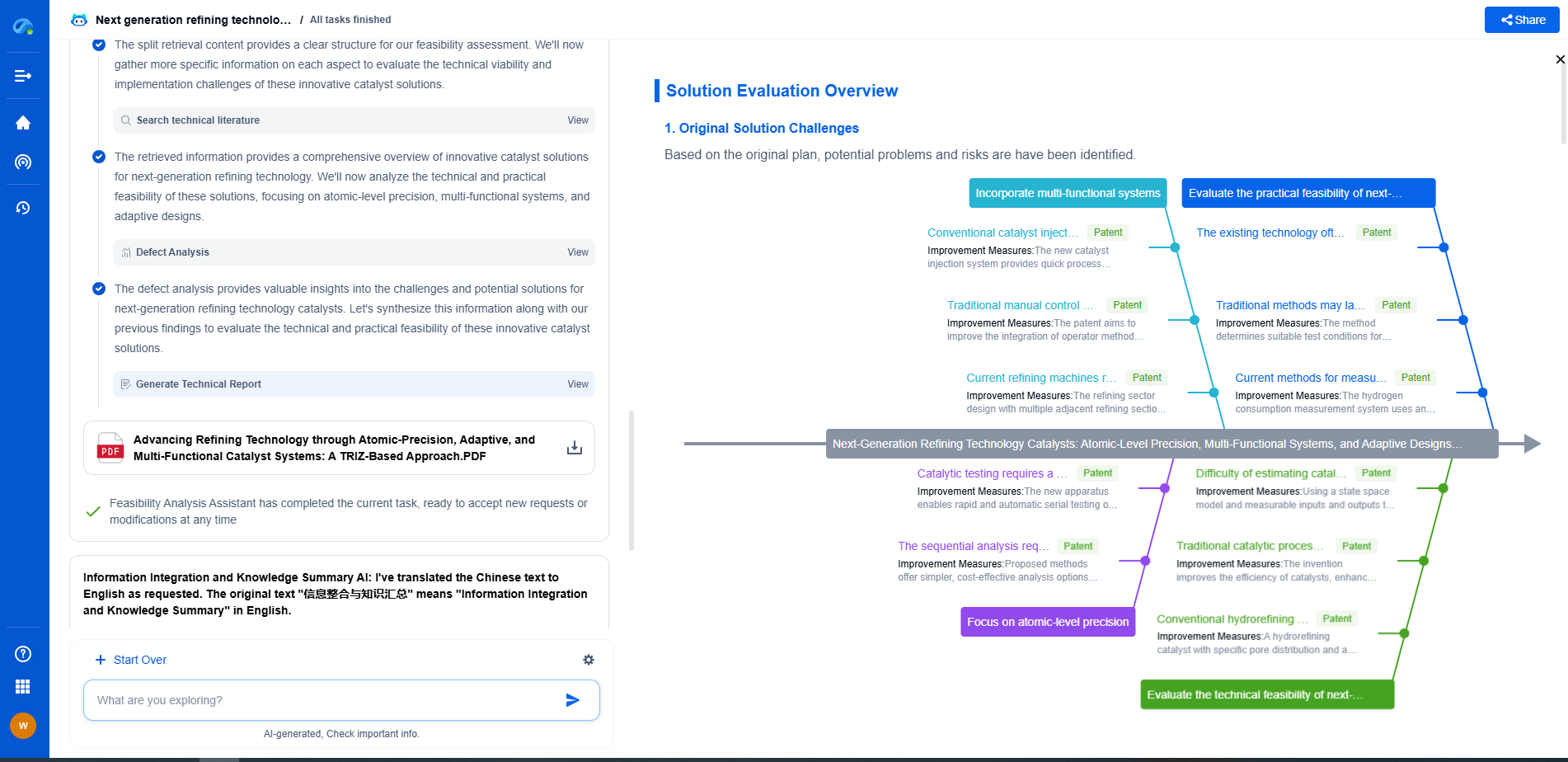System Design Considerations for Pressure Build-Up Units in Vertical vs. Horizontal Tanks
JUL 21, 2025 |
Pressure build-up units are essential components in storage tanks, particularly in industries dealing with volatile or pressurized substances such as oil, chemicals, and liquefied gases. The design and functionality of these units are crucial for maintaining safety, operational efficiency, and regulatory compliance. This blog delves into the system design considerations for pressure build-up units in vertical versus horizontal tanks.
Design Comparison: Vertical vs. Horizontal Tanks
Vertical tanks, often cylindrical, are preferred in industries with limited space as they utilize height to maximize storage capacity. In contrast, horizontal tanks, typically used for smaller volumes, offer stability and ease of access for maintenance purposes.
Pressure build-up units in vertical tanks often involve considerations for gravitational effects on fluid pressure and temperature stratification. In horizontal tanks, the design must account for variations in pressure distribution along the tank length, which can affect fluid dynamics and pressure management.
Safety Considerations
Safety is paramount in system design for any pressure build-up unit. For vertical tanks, the risk of pressure accumulation at the tank's bottom due to gravitational forces necessitates precise pressure relief mechanisms. This may include pressure relief valves strategically placed at different heights.
Horizontal tanks, being closer to the ground, require robust foundations to mitigate risks of rollovers or instability, which could compromise the pressure system's integrity. The design must also ensure that pressure build-up does not lead to uneven distribution, which could cause structural stress or material fatigue.
Material and Structural Integrity
Material selection plays a vital role in the design of pressure build-up systems. For vertical tanks, the materials must withstand the increased pressure at the base, often requiring reinforced structures or higher-grade materials to prevent deformation or failure. For horizontal tanks, materials must support the axial forces resulting from pressure variations, especially in tanks subject to frequent loading and unloading cycles.
Temperature Management
Temperature fluctuations significantly impact pressure levels within storage tanks. Vertical tanks might experience temperature gradients from top to bottom, affecting pressure consistency. Incorporating temperature sensors and automated pressure adjustment can help maintain stability.
In horizontal tanks, temperature effects are more uniform, but the length of the tank can lead to thermal expansion issues. Insulation and temperature control mechanisms are essential to prevent excessive pressure changes due to temperature variations.
Maintenance and Accessibility
Maintenance access is another critical consideration. Vertical tanks often require scaffolding or specialized equipment for accessing pressure build-up units, influencing design decisions regarding component placement and ease of replacement.
Horizontal tanks, while generally offering easier access, still require careful planning to ensure that pressure relief and monitoring systems are easily reachable for routine checks and emergency interventions.
Regulatory Compliance
Both vertical and horizontal tanks must adhere to strict regulatory standards to ensure safety and environmental protection. This includes guidelines on pressure limits, material specifications, and safety features. Understanding these requirements is crucial during the design phase to avoid costly redesigns or compliance issues.
Conclusion
Designing pressure build-up units for vertical and horizontal tanks involves a nuanced understanding of the unique challenges posed by each configuration. By considering factors such as safety, material integrity, temperature management, and regulatory compliance, engineers can create systems that ensure reliable operation while minimizing risks. Whether dealing with towering vertical tanks or stable horizontal ones, the key is balancing functionality with safety and operational efficiency to meet industry demands.
As clean energy and decarbonization drive new breakthroughs in hydrogen storage, CO₂ transport, and alternative gas carriers, keeping pace with technical trends and patent activity is critical to staying competitive.
Patsnap Eureka helps innovators in compressed gas storage, high-pressure tank design, gas sensor systems, and pipeline materials accelerate research by offering instant, AI-powered insights into global patents, related technologies, and emerging white spaces.
🚀 Bring speed, precision, and strategic foresight to your innovation and IP decision-making in the gas transport sector—try Eureka today and unlock a smarter path forward.
- R&D
- Intellectual Property
- Life Sciences
- Materials
- Tech Scout
- Unparalleled Data Quality
- Higher Quality Content
- 60% Fewer Hallucinations
Browse by: Latest US Patents, China's latest patents, Technical Efficacy Thesaurus, Application Domain, Technology Topic, Popular Technical Reports.
© 2025 PatSnap. All rights reserved.Legal|Privacy policy|Modern Slavery Act Transparency Statement|Sitemap|About US| Contact US: help@patsnap.com

